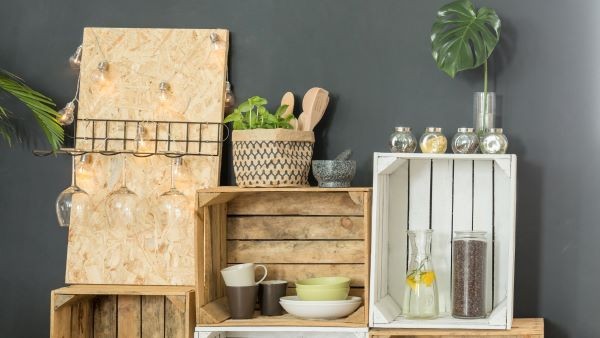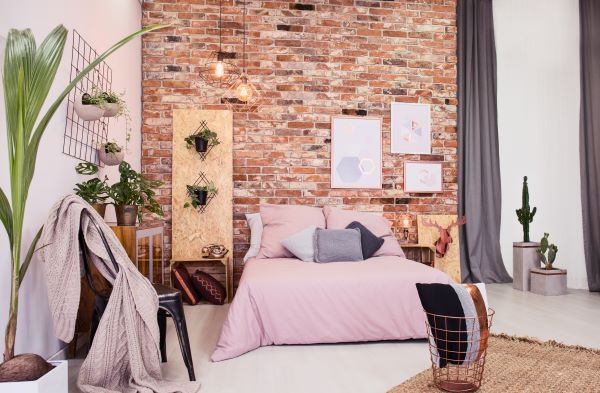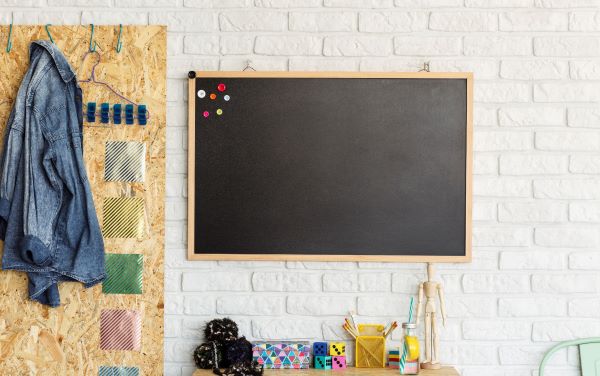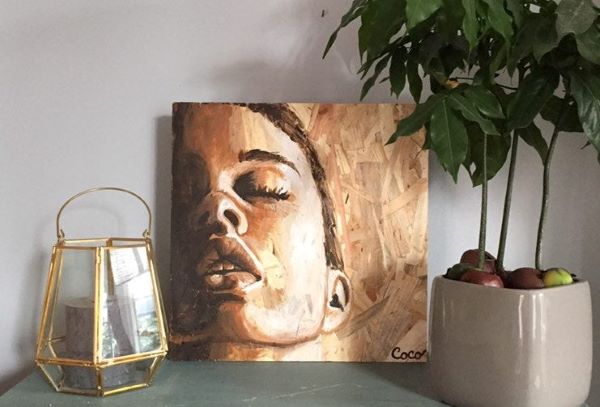What is OSB and what is it used for?

Most people know what plywood is and turn to it for renovation and DIY projects, but what about OSB board – what is this and what can you use it for? Is it better than plywood or should it be used for different projects entirely?
We’ll cover all this and more in this product review.
What is OSB?
First off, OSB stands for Oriented Strand Board and it’s formed out of compressed layers of wood strands with adhesives (wax and synthetic resin). OSB has been around since 1963 and unlike similar products, the strips of wood in each layer are placed strategically rather than randomly to give it strength and it can have up to 50 layers of wood in total! The wood comes from sustainable, small, quick growing trees such as aspen poplar and southern yellow pine and the result is incredibly strong.
OSB is so strong in fact that it is now used for about 70% of all floor, wall and roof sheathing in North America and there are two different types of OSB, OSB2 and OSB3.
OSB2 is great for structural, non-load bearing projects in dry conditions whereas OSB3 performs better for structural, load bearing use and for use in humid conditions.

What Can it be Used For?
There’s a variety of DIY projects that OSB is fantastic for and you can use it for both interior and exterior use as it’s weather resistant (check for a stamp on the back of the board to make sure).
It’s regularly used for flooring because of its strength and it’s ideal for a workshop or shed. It can also be used for roof sheathing to go under your roofing system or as a sheathing on the walls.
But for a creative person or carpenter OSB can be used to create a multitude of different pieces of furniture or cabinetry as well. With a little creativity the sky is the limit with the endless options, headboards, noticeboards, drawers and wardrobes.
If you are thinking of using it in the garden, although it’s weather resistant, for permanent outdoor use you will probably want to add some further weather protection.
The weather resistant sealant will also only have been applied to the surface of the OSB so as soon as you make a cut into it you will want to add more sealant to ensure that water is not absorbed through the exposed material.
If you are going to add some more water protection, it’s worth adding some to an offcut of the OSB first to see the effect it has before carrying it out on your whole board. Once you’ve applied the sealant you can test the offcut by putting some water on it and leaving it for a few hours to see the effect.
Here’s How to Quickly and Easily Add Further Water Protection to Your OSB:
- Cut your OSB into the different pieces that you need for your project
- Sand your OSB pieces lightly and then paint or stain it using a weather-proof exterior paint that is either oil or latex based, or a stain for a natural finish
- Once dry, paint on a wood waterproofing sealant on all sides and all cuts
- Allow to dry for 12 – 14 hours on each side or as specified on the sealant
- Apply a second coat if required
- Allow to dry for 12 – 14 hours on each side or as specified on the sealant

Is OSB Better Than plywood?
The material difference between plywood and OSB is that plywood is made up of lots of thin layers of wood whereas OSB is made up of lots of strands of wood crossed over each other giving it extra strength. There are a few pros and cons for both plywood and OSB but often it falls to personal preference and opinion as to which is best.
Here’s some of the main pros and cons of OSB:
The pros of OSB:
- It’s cheaper than plywood
- It’s available in larger sheets than plywood
- It’s thicker and heavier which is considered by some as an advantage and some as a disadvantage
- It’s considered more environmentally friendly than plywood as smaller, younger trees can be used to produce it making it more sustainable
The cons of OSB:
- It will need sealing at any cuts to make sure that it remains water resistant otherwise it can swell and absorb water at cuts
- It can take longer to dry out than plywood
- It’s thicker and heavier which is considered by some as an advantage and some as a disadvantage
What Else Can You Do With OSB?
You could easily create all your furniture using OSB! The natural finish looks perfect married with white and has been used to create desks, tables, sofas and cupboards. There’s also a growing number of artists that use OSB as a canvas because of it’s great texture, it gives a unique finish with the layers of wood showing through. Here's an example from the fantastic artist Coraline VB who has an Etsy shop at DessinsDeCoco.

Contact Us
You can purchase Oriented Strand Board with some great discounts at Roofing Megastore and we'd love to see some of your creations - you can message us any photos of your makes on Facebook. And if you need any advice feel free to give us a call on 01295 565565, email us at